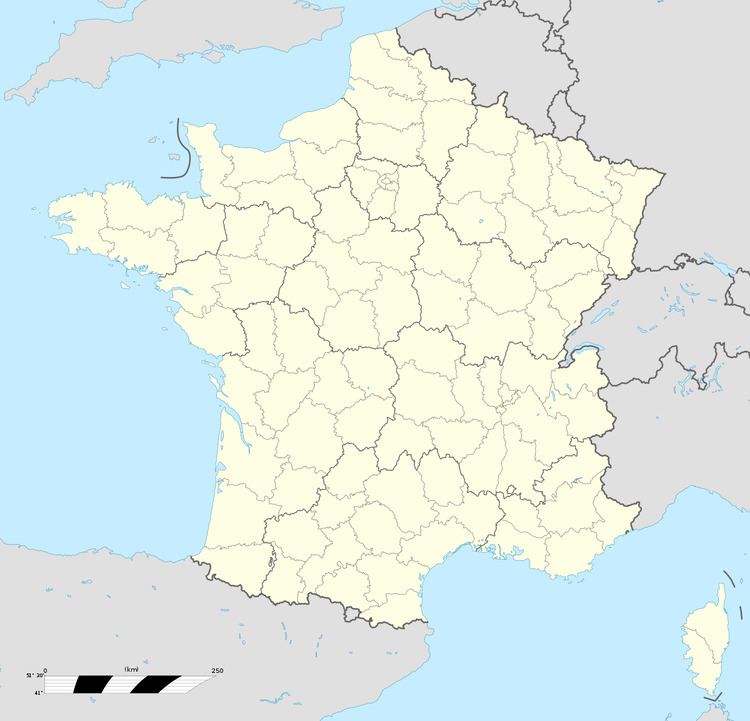Canton Bidache Area 5.3 km² | Intercommunality Pays de Bidache | |
 | ||
Arancou (Basque: Erengo) is a commune in the Pyrénées-Atlantiques department in southwestern France.
Contents
- Map of 64270 Arancou France
- Hydrography
- Hamlets
- Bordering communes
- Toponymy
- Prehistory
- Modern history
- Arancou and Basque country
- Administration
- Intercommunality
- Economy
- Civil Heritage
- Religious Heritage
- References
Map of 64270 Arancou, France
It is located in the former province of Lower Navarre.
Hydrography
The Lauhirasse, a tributary of the Bidouze, and the Baniou, a tributary of the Gave de Pau cross this commune.
Hamlets
Bordering communes
Toponymy
The Gascon name for "Arancou" is Arancon; the Basque name is Erango.
The name Arancou appears in the forms Arranque (1119–1136), Arancoen (13th century), Arancoey, Arancoenh (around1360), Arrancoeynh, Arancoinh (1372), Aranquoen (1403, titles of Came), and Aranco (1584, alienation of the Diocese of Dax).
The name of Arancou comes from the Basque arangoien, for "higher valley".
Prehistory
Tools from the Magdalenian era, one of the later cultures of the Upper Paleolithic era of Western Europe, were found in the Bourrouillan cave in the territory of Arancou. Several thousand bones from hunted animals were found in the cave, as well as thousands of flint and bone tools.
Modern history
On January 1, 1973, the communes of Arancou, Bergouey, and Viellenave-sur-Bidouze were joined together. On 15 November 1977, Arancou regained its independent status, while Bergouey and Viellenave-sur-Bidouze remained together.
Arancou and Basque country
Jean-Baptiste Orpustan mentions Arancou in 1309 in a list of parishes paying dues to the royal power in Navarrenx. Arancou was also mentioned by Eugène Goyheneche towards the end of the Middle Ages. He wrote that "because of the Gramont's power, [the situation of the neighboring parishes, including Arancou] is ambiguous."
However, starting with the modern age, no evidence of Arancou's allegiance to the Kingdom of Navarre can be found. Nor is there evidence of any links to the dukedom of Gramont or of the sovereign principality of Bidache. The chapter of the collegiate Saint-Jacques de Bidache was the lord of the lands; the parish was situated in France in the administrative district of Lannes, where it came under the control of the administrative region of Hastingues.
Although Arancou falls without a doubt within modern districting, it is nonetheless included in a list of the communes of Basse-Navarre. While presenting the town in 2009 on his website, the mayor, Alexandre Bordes, did not take sides. Rather, he emphasized the "mix of deep-rooted cultures" and the "location of the town at the borders of Gascogne, Béarn, Basque Country, and the Navarre." His website describes the town as "basquo-béarnais."
Administration
List of Mayors
Intercommunality
Arancou belongs to four different intercommunal territories:
Economy
Arancou's economy is primarily agricultural. Arancou is part of the Appellation d'origine contrôlée (a French regional certification) of the cheese, Ossau-Iraty.
There is a limestone quarry in Arancou. Until 1993, it provided the stone for the cemetery, Ciments de l'Adour, in Boucau. The stone was carried in barges down the Bidouze and Adour rivers.
Civil Heritage
Religious Heritage
The church of l'Assomption-de-la-Bienheureuse-Vierge-Marie from the 8th century is listed as an historical monument. The Gothic cathedral is located on the road, Saint-Jacques-de-Compostelle (Via Turonensis). A wellspring runs underneath the church, feeding a washing-place in the basement. A Madonna called Notre-Dam-d'Arancou can be found in the church, as well as an hilarri (a disk-shaped funeral stele) from Labets-Biscay, and different furnishings registered in the inventory of the Minister of Culture (a tabernacle, font, and cross.) The church also has a registered stained glass window.
